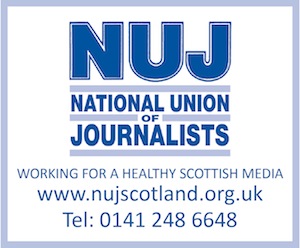THE media release is probably the most common way of trying to attract the interest of the media, but for any media release to achieve its objective, it is necessary to recognise some home truths.
Unless you are so important the media cannot afford not to consider whatever you send them, then they are fundamentally not interested in you.
And not only do they not care, they haven’t got the time to give media releases any more than a cursory glance – there are just so many of them.
Sure, media releases that are packed full of information can serve an useful purpose, but only after it has achieved its first aim of getting a journalist to linger longer, to resist the temptation to just throw the release in the bin.
In other words, the survival of most media releases rests on the first few words of the opening paragraph.
Should they fail to spark interest, it’s likely ‘the game is already over’.
Remember, every day of the week, dozens – if not hundreds of organisations – are doing something, at some time, some where.
The reaction of most journalists is: so what? It’s a scepticism that, in all honesty, we all share about any story.
Perhaps, then, the first few words should not be about what you are doing – and, anyway, that smacks of self-congratulation – but about the IMPACT of what you are doing. If your actions will affect the money in people’s pockets, or their health, or their street, or…, chances are, you’ve captured their interest.
It is, therefore, what you leave out, rather than what you put in, that makes for a good opening paragraph. Don’t fall foul of filling your opening paragraph with information that actually could put people off – not least unfamiliar names, acronyms, jargon and numbers. Have the confidence to tell the story simply, using simple language. Certainly, don’t ask your reader to have to perform some mental gymnastics by starting your opening paragraph with the word, ‘Despite’.
Get the opening paragraph wrong and few people will bother to read on.
Having deliberately avoided saying too much in the opening paragraph – and so teased people to want to find out more – the rest of the media release should be relatively easy to complete, because the task has suddenly become an exercise in fleshing out the story, the essence of which you provided in your opening paragraph. It’s here that names, titles, numbers, etc., are revealed.
And what makes a story? You already know, if only intuitively: conflict, the gossip you might chat about over a coffee with a friend, something new (remember where the word, ‘news’, comes from), a wow factor, etc.
If your opening paragraph has done its job correctly, chances are it has teed up the questions you now need to answer: what exactly is happening, who is involved, when is it happening and where, and how is it happening and why? The more important the information, the higher it should go up the media release, for the very simple reason that, with every successive paragraph, your audience is bailing out: they are bored; they’ve read enough.
The logic of the well-crafted media release is that, if it’s the story that matters and not the names behind it, then quotes from key people require to be placed some way down from the opening paragraphs.
At the end of your media release, don’t forget to provide a contact name and details (including, perhaps, an out-of-office-hours telephone number).
Don’t forget also a headline to top the media release; preferably, short and snappy.
Err towards the present tense rather than the past, so the media release reads more alive. For instance, ‘says’ rather than ‘said’, ‘is’ rather than ‘was’.
Don’t forget to decide between the release being either For Immediate Release or embargoed, say to 00.01 on a day in the future (00.01 being a minute after midnight).
Sending out an embargoed media release risks your story breaking ahead of schedule, though it’s in the interests of most journalists and media outlets to avoid gaining a reputation as embargo-busters.
An embargoed media release is an useful tool to catch quiet times of the week and year (as far as the media is concerned), without you having to be in the office to send out as a For Immediate Release; e.g. 00.01 on a Monday, or for a date during holidays, not least over Christmas and New Year.
Mike Wilson is a director of allmediascotland.com





